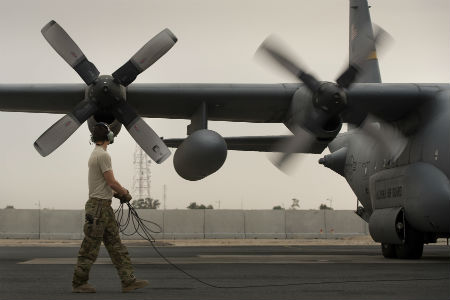 The Air Force’s three components have begun to close the gap on how they measure costs and performance, said Dennis McCarthy, chairman of the congressionally-mandated National Commission on the Structure of the Air Force, on Friday. In the nasty aftermath of the Fiscal 2013 budget battle, one of the issues often disputed was how the cost of performing a mission is calculated. The reserve components argued they were the more “cost-effective” option, while USAF Headquarters argued the three components cost the same when activated. “I think they are much closer than they were a year ago,” McCarthy said. There is a greater recognition across the Air Force now that the “fully burdened cost” of personnel throughout their career is the way to go, he added. “The difficulty there is that there isn’t a common understanding of what elements should be used to make up that life cycle cost,” he said. The Air Force has stepped out on its own and developed the Individual Cost Assessment Model as a way to judge actual personnel costs. This is a “step towards resolution,” he said. However, the other factor is mission output—readiness and capability. “I’m not naïve to think there’s harmony . . . but the Air Force is much closer to a common understanding of how to measure the cost of both people and output,” McCarthy said. (NCSAF report; caution, large file)(See also Rebooting the Total Force from the July 2013 edition of Air Force Magazine)
The Air Force’s three components have begun to close the gap on how they measure costs and performance, said Dennis McCarthy, chairman of the congressionally-mandated National Commission on the Structure of the Air Force, on Friday. In the nasty aftermath of the Fiscal 2013 budget battle, one of the issues often disputed was how the cost of performing a mission is calculated. The reserve components argued they were the more “cost-effective” option, while USAF Headquarters argued the three components cost the same when activated. “I think they are much closer than they were a year ago,” McCarthy said. There is a greater recognition across the Air Force now that the “fully burdened cost” of personnel throughout their career is the way to go, he added. “The difficulty there is that there isn’t a common understanding of what elements should be used to make up that life cycle cost,” he said. The Air Force has stepped out on its own and developed the Individual Cost Assessment Model as a way to judge actual personnel costs. This is a “step towards resolution,” he said. However, the other factor is mission output—readiness and capability. “I’m not naïve to think there’s harmony . . . but the Air Force is much closer to a common understanding of how to measure the cost of both people and output,” McCarthy said. (NCSAF report; caution, large file)(See also Rebooting the Total Force from the July 2013 edition of Air Force Magazine)
An Air Force F-16 pilot designed a collapsible ladder that weighs just six pounds and folds into the unused cockpit map case.